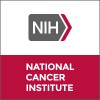
Donor Stem Cell Transplant in Treating Older or Frail Patients With Hematologic Cancer
Chronic Myeloproliferative DisordersLeukemia3 moreRATIONALE: Giving low doses of chemotherapy, such as fludarabine and busulfan, before a donor bone marrow or peripheral blood stem cell transplant helps stop the growth of cancer cells. It also stops the patient's immune system from rejecting the donor's stem cells. The donated stem cells may replace the patient's immune system and help destroy any remaining cancer cells (graft-versus-tumor effect). Giving an infusion of the donor's T cells (donor lymphocyte infusion) after the transplant may help increase this effect. Sometimes the transplanted cells from a donor can also make an immune response against the body's normal cells. Giving antithymocyte globulin before transplant and methotrexate and tacrolimus after the transplant may stop this from happening. PURPOSE: This phase I trial is studying the side effects of donor stem cell transplant in treating older or frail patients with hematologic cancer.

Mobilization of Stem Cells With AMD3100 (Plerixafor) and G-CSF in Non-Hodgkin's Lymphoma and Multiple...
LymphomaNon-Hodgkin1 moreThis study evaluates the safety and efficacy of plerixafor given in addition to granulocyte-colony stimulating factor (G-CSF) for collection of peripheral blood stem cells (PBSCs) for autologous transplantation in patients with non-Hodgkin's lymphoma (NHL) and multiple myeloma (MM). Efficacy outcomes include evaluation of fold increase in circulating CD34+ cells from just before the first plerixafor injection to 10-11 hours post plerixafor (just before apheresis) and assessment of successful polymorphonuclear leukocyte (PMN) engraftment after transplantation. Data from this protocol will assist in the determination of the dosing schedule for future studies.

Treatment With AMD3100 (Plerixafor) in Non-Hodgkin's Lymphoma and Multiple Myeloma Patients
LymphomaNon-Hodgkin1 moreThis study evaluates the safety of plerixafor and other outcomes that are purely exploratory in nature. One other pre-specified outcome is to evaluate an interval of 10-11 hours between dosing with plerixafor and the beginning of apheresis to determine if there will be at least a 2-fold increase in circulating CD34+ cells. Data from this protocol will assist in the determination of the dosing schedule for future studies.

Comparison of HD Chemotherapy Followed by Auto-transplant and R-CHOP in High Risk Patients With...
Diffuse Large B-Cell LymphomaMulticentric randomized phase III study comparing high doses of chemotherapy with Rituximab followed by auto-transplant HPC versus CHOP plus Rituximab as first line therapy in high risk patients with DLBCL Non-Hodgkin's lymphomas.

Temsirolimus in Treating Patients With Metastatic Solid Tumor or Lymphoma That Cannot Be Removed...
Hepatic ComplicationsLymphoma2 moreThis phase I trial is studying the side effects and best dose of temsirolimus in treating patients with metastatic solid tumor or lymphoma that cannot be removed by surgery who have different levels of liver function. Temsirolimus may stop the growth of cancer cells by blocking some of the enzymes needed for cell growth. Temsirolimus may have different effects in patients who have changes in their liver function

Sorafenib in Treating Patients With Recurrent Non-Hodgkin's Lymphoma
Anaplastic Large Cell LymphomaRecurrent Adult Diffuse Large Cell Lymphoma1 moreSorafenib may stop the growth of cancer cells by blocking blood flow to the cancer and by blocking some of the enzymes needed for cell growth. This phase II trial is studying how well sorafenib works in treating patients with chemosensitive recurrent aggressive non-Hodgkin's lymphoma

PXD101 and Bortezomib in Treating Patients With Advanced Solid Tumors or Lymphomas
Adult Grade III Lymphomatoid GranulomatosisAnaplastic Large Cell Lymphoma60 moreThis phase I trial is studying the side effects and best dose of PXD101 and bortezomib in treating patients with advanced solid tumors or lymphomas. PXD101 and bortezomib may stop the growth of cancer cells by blocking some of the enzymes needed for cell growth. PXD101 may also cause cancer cells to look more like normal cells, and to grow and spread more slowly. Giving PXD101 together with bortezomib may kill more cancer cells.

Chemotherapy and Total-Body Irradiation Followed by Donor Umbilical Cord Blood Transplant, Cyclosporine,...
Chronic Myeloproliferative DisordersLeukemia2 moreRATIONALE: Giving low doses of chemotherapy, such as cyclophosphamide and fludarabine, and radiation therapy before a donor umbilical cord blood stem cell transplant helps stop the growth of cancer cells. It also stops the patient's immune system from rejecting the donor's stem cells. The donated stem cells may replace the patient's immune system and help destroy any remaining cancer cells (graft-versus-tumor effect). Sometimes the transplanted cells from a donor can also make an immune response against the body's normal cells. Giving cyclosporine and mycophenolate mofetil after the transplant may stop this from happening. PURPOSE: This clinical trial is studying how well giving chemotherapy together with total-body irradiation followed by donor umbilical cord blood transplant, cyclosporine, and mycophenolate mofetil works in treating patients with hematologic cancer.

A Phase I Study of Bendamustine Hydrochloride in Patients With Indolent B-cell Non-Hodgkin's Lymphoma...
Non-Hodgkin's LymphomaThe purpose of this study is to assess the tolerability, pharmacokinetics and antitumor effect of bendamustine hydrochloride (SyB L-0501) in patients with indolent B-cell Non-Hodgkin's Lymphoma.

Panobinostat (LBH589) Plus Everolimus (RAD001) in Patients With Relapsed and Refractory Lymphoma...
LymphomaObjectives: Primary: Determine the maximum tolerated dose (MTD) and dose limiting toxicity (DLT) of the novel combination of everolimus + Panobinostat (LBH589) in a phase-I study in patients with relapsed lymphoma (Hodgkin and non-Hodgkin). Determine the safety and efficacy of this novel combination in a phase-II study in patients with relapsed Hodgkin and non-Hodgkin lymphoma Secondary: Determine the in vivo effect of therapy on selected serum cytokines/chemokines (TGF-beta, thymus and activation-regulated chemokine (TARC), IL-6, IL-10, VEGF). Examine pre-treatment level of selected molecular targets (HDACs 1-11, STAT6, pSTAT6, STAT3, pSTAT3, Myc, Akt, Pichia anomala killer toxin (pAkt), S6, pS6, p21, cyclin D1) in primary lymphoma cells and the surrounding reactive inflammatory cells obtained by core needle biopsies from patients with relapsed lymphoma. Examine the correlation between molecular and biologic markers and clinical response and/or treatment-related toxicity.
